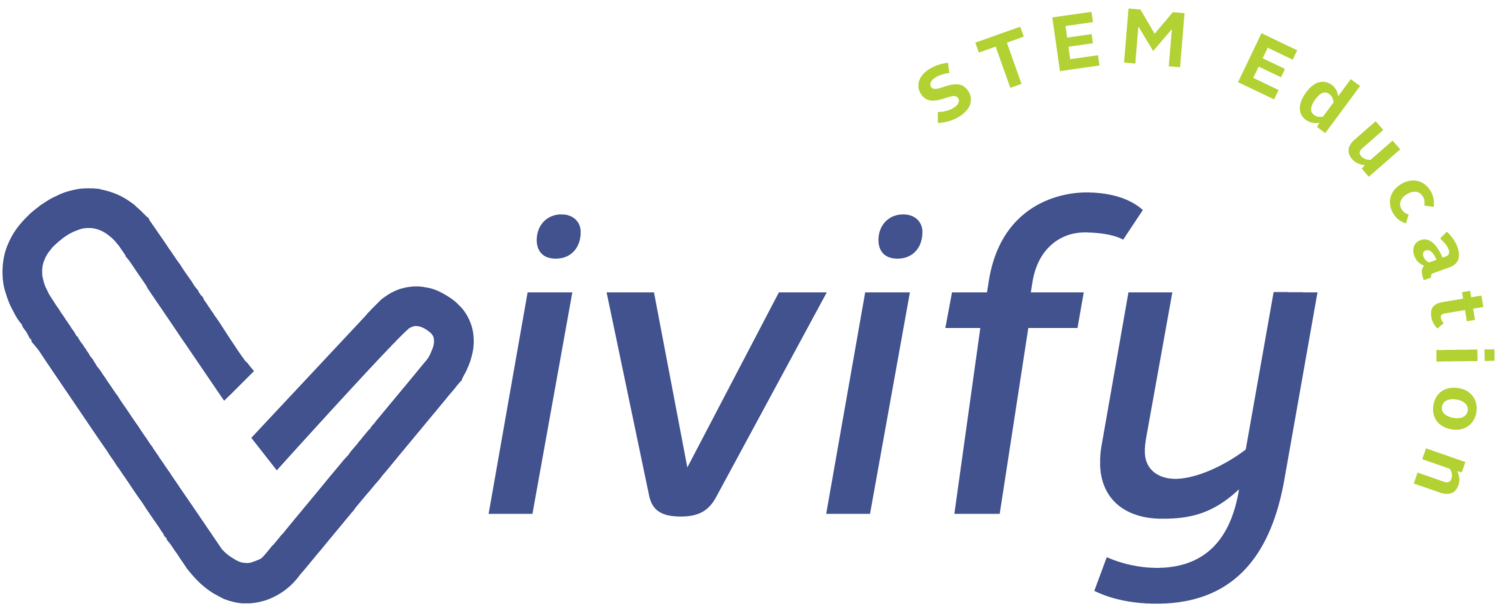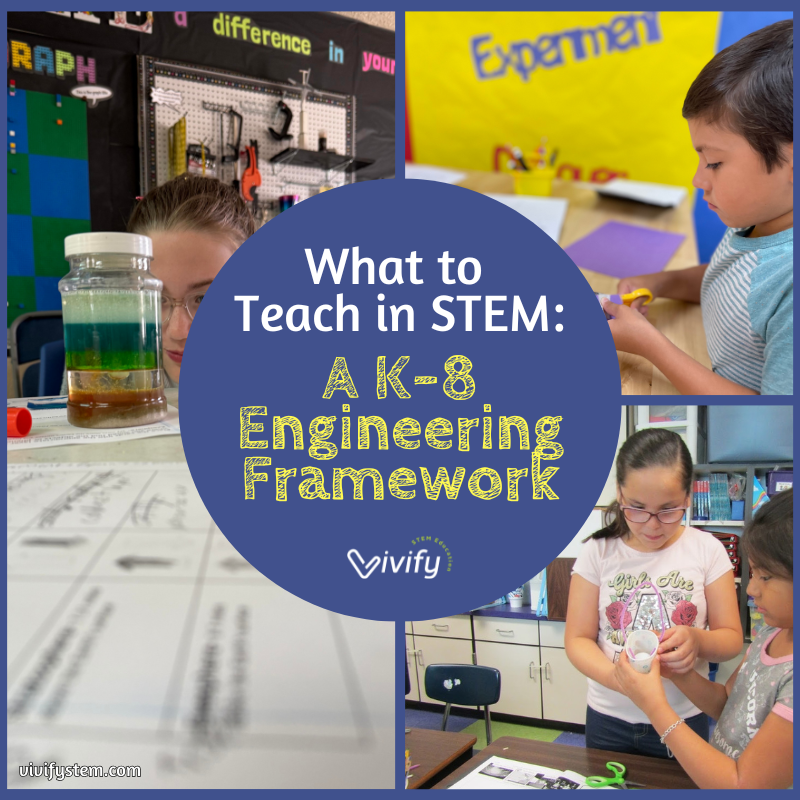What to Teach in STEM: A K-8 Engineering Education Framework
Post by Dr. Natasha Wilkerson
June 2, 2025
You’ve been tasked with bringing STEM into your classroom, and you’re excited to create a space filled with innovation, problem-solving, and curiosity. You want to inspire and prepare your students for the future. But a quick online search for “STEM activities” bombards you with tower challenges, cardboard art, popsicle catapults, robotics competitions, and even a balloon launch to space. Suddenly, you begin to wonder—is everything STEM? Where do I even begin? What makes an activity STEM?
We have been struggling with these same questions in our own STEM classrooms, which led us to develop the 3 Stages of STEM Education. Check out the post here or check out the quick video below.
While this model has transformed how we organize and structure STEM programs, one challenge remains: How do we define the learning outcomes of STEM? Should STEM lessons align with science standards? Technology frameworks? Or should they reflect a fully integrated approach?
To help educators navigate this complex and evolving landscape, we’re excited to introduce Vivify’s K–8 Framework for Engineering Education! In this post, we’ll unpack how we define STEM learning and explore what are appropriate goals for a K-8 STEM classroom.
Defining STEM Education
STEM stands for science, technology, engineering, and mathematics. But a “STEM lesson” is not about checking the box for each subject. A science lesson is not STEM. A math problem is not STEM. Instead, in our STEM classroom, students apply math and science to develop a technological solution to an engineering problem.
In this approach, engineering is the integrating force of STEM.
We already have dedicated math, science, and often technology courses. Engineering brings something new. In our view, STEM education is engineering education. Engineering teaches students to understand and engage with the human-made world.
We live in an engineered world—almost everything we touch has been thoughtfully designed by engineers to make our lives easier, healthier, and more enjoyable. Imagine the experience of driving a car, riding a roller coaster, or using a smartphone; each is made possible by engineering innovations that have transformed our daily lives. By understanding how these technologies work and their impacts, students gain the tools to interact more meaningfully with the world around them.
Just as science education sparks curiosity about the natural world, engineering education helps students make sense of the technology and innovations that shape their daily lives.
Defining Learning Goals for STEM Education
In high school classrooms, engineering learning goals have been defined by the American Society for Engineering Education (ASEE) through their Framework for P–12 Engineering Learning. This framework outlines the essential knowledge, skills, and dispositions students should develop to achieve engineering literacy. For a detailed breakdown, check out our post: Understanding a Framework for P-12 Engineering Learning.
While this framework is a valuable starting point, its goals are primarily aligned with preparing students for undergraduate engineering programs. Just take a look at one of the high school performance expectations, which asks students to apply knowledge from Mechanics of Materials:
“...such as (a) stress types and transformations, (b) material characteristics, (c) stress-strain analysis, (d) material deformations, (e) material equations, (f)phase diagram, (g)Mohr’s circle, and (h)Young’s modulus, to analyze the properties, compositions, and behaviors of available, or needed, materials to solve problems in a manner that is analytical, predictive, repeatable, and practical.”
Yikes! Reading that takes me back to a graduate-level material science course!
Although the framework authors clarify that students aren’t expected to master every topic, but rather draw from relevant areas as needed, it still sets a high bar. This is especially challenging given that only 6% of K–12 teachers have taken any engineering coursework (Banilower et al., 2018).
What educators need is clearer guidance on what foundational engineering knowledge looks like. Engineering education is not just for future engineers, but for all students. Engineering literacy should empower students to understand and navigate the world around them, whether or not they pursue STEM careers.
So in an effort to support elementary and middle school grades, it's crucial to introduce topics that are:
Accessible: Engaging and understandable for younger students.
Foundational: Building essential knowledge and skills for engineering literacy
Aligned: Complementary to existing STEM classroom subjects.
Watch the video below as we break down Vivify’s K-8 Framework for Engineering Learning, or keep scrolling to read more.
To define engineering literacy, we have identified the following topics within the context of the engineering discipline:
Science principles that relate to the field of engineering
Technology as the products and systems created through engineering
Making as the hands-on process of designing, building, and refining technologies
Hands of Mind as the critical thinking and problem-solving skills essential to engineering work
Real-World connections that ground learning in authentic engineering challenges
Math as a fundamental tool for engineering work
Breaking this down further, here is how we define each area of engineering foundations for classroom learning:
Science: A strong foundation in science helps students understand how natural and human-made systems operate. They should apply relevant scientific principles and laws to engineering problems, reinforcing interdisciplinary connections.
Technology: Technology is more than computers—it includes all human-designed products and systems. Students should learn about how these innovations work, their impact on society, and how they evolve over time.
Making: Engineering begins with hands-on exploration. Students develop intuition about material and structural properties, learn to use tools, and create new products.
Habits of Mind: Beyond technical skills, engineering requires a mindset of creativity, persistence, collaboration, and systems thinking. These foundational skills support not only engineering success but also overall academic and life success.
Real World Applications: Students must connect engineering concepts to real-world contexts. By studying the human-designed world, they learn about practical considerations in design, engineering decisions, and the work of professional engineers.
Math: Mathematics is essential for engineering problem-solving. Students use math to analyze quantitative data, make design decisions, and apply mathematical tools to real-world problems.
We hope this framework serves as a helpful starting point for defining learning goals in a STEM classroom. The key takeaway? All subject areas should integrate with engineering in a meaningful way.
Take science, for example. STEM educators need to identify science content that directly connects to real-world engineering applications. For example, in a science classroom, students are taught about falling objects in a vacuum to promote understanding of gravitational forces. However, these idealized laws are very confusing when applied to a drag device challenge! Watch the video below where we unpack some of these challenges or check out our popular Space Lander Design Challenge with connections to engineering sciences!
Connecting to the 3 Stages of STEM
How does this all come together in a STEM classroom? Following our 3 Stages of STEM approach, we believe that Stage 1 can more explicitly build these engineering foundations. Often, the focus is on teamwork and communication, which are critical habits of mind, but students also need a background in relevant science content, making skills, collecting data, and other areas that are essential to completing a Stage 2 challenge.
Then in Stage 2, students apply relevant engineering knowledge and skills to solve an engineering design problem that is grounded in a real-world engineering context. Stage 3 extends this even further with an open-ended problem that is more student-driven and involves research and input from experts.









